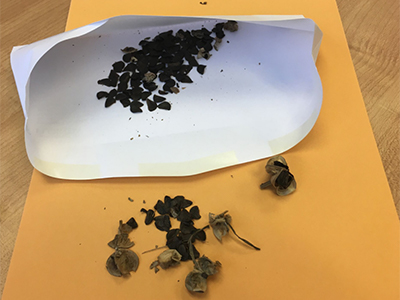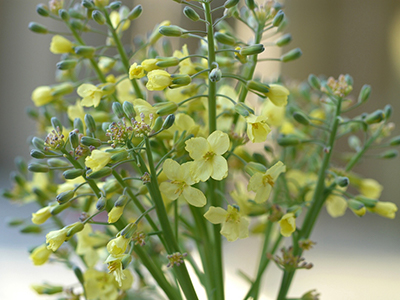Seed Saving

A collection of rain lily seeds (Zephyranthes spp.) UF/IFAS.
Collecting seeds is one way to take your passion for gardening to the next level. You can collect seeds from annuals, perennials, vegetables, and fruits in your garden with varying degrees of ease.
Part of the fun of collecting seeds is growing your own low-cost plants and having extras to share with friends. Just remember that not all plants grown from seed will look exactly like the plants they are gathered from (their parent plants).
For flowering plants that do not make fruit, wait until the flowers have dried up, leaving you with a dry brown seed head. You can snip off a whole seed head into the container of your choosing. Figuring out exactly when your seeds are ready to be harvested may take some practice, just like it takes some practice to know when your vegetables and fruits are ripe for picking. Once picked, seeds will not continue to develop, so they do need to be harvested once mature and not too early.
Seed heads and seed pods need to be air-dried after they are harvested. You can lay them out on newspaper or in a shallow box to do this. Make sure you spread them out to allow them room to dry as you want to avoid seeds becoming moldy. Once they have dried out you can shake seeds loose from pods or seed heads. Keep seeds from different flowers in separate paper envelopes and label them with the plant’s name and the date collected. It is best to use paper envelopes to store your seeds; if there is even the slightest bit of moisture present, mold can develop. Keep the seeds stored in a cool dry place until it is time to plant.
When you are told to store seeds in a "cool, dry place," you may wonder what exactly that means. We recommend putting seed envelopes in a tightly sealed jar in the refrigerator. Some people choose to store seeds in the freezer but this can be tricky as seeds have to be very dry before freezing or the seeds can be killed.

When this broccoli's flowers dry up, the seeds can be harvested.
Photo by Hidetsugu Tonomura. Some rights reserved.
Saving seeds from vegetables can be easy, too. Many vegetables like broccoli, greens, carrots, and more will "bolt" and go to seed when temperatures rise. You can harvest seeds from these vegetables much the same way you harvest and dry seeds from flowers.
For fruits and vegetables that have wetter seeds (think tomatoes or blueberries), you’ll want to clean and dry the seeds more thoroughly. Smear the seeds out across a paper towel and allow them to dry out. Once they are dry you can remove any leftover fruit particles.
Dried seeds should then be stored in a labeled paper envelope that is kept in a cool, dry place.
Of course, not every seed will grow. Errors and failures are all part of the game, but it can be immensely rewarding to grow plants from seeds collected in your own garden. Plus, passing along your own seeds to gardening friends can be a great gift.

